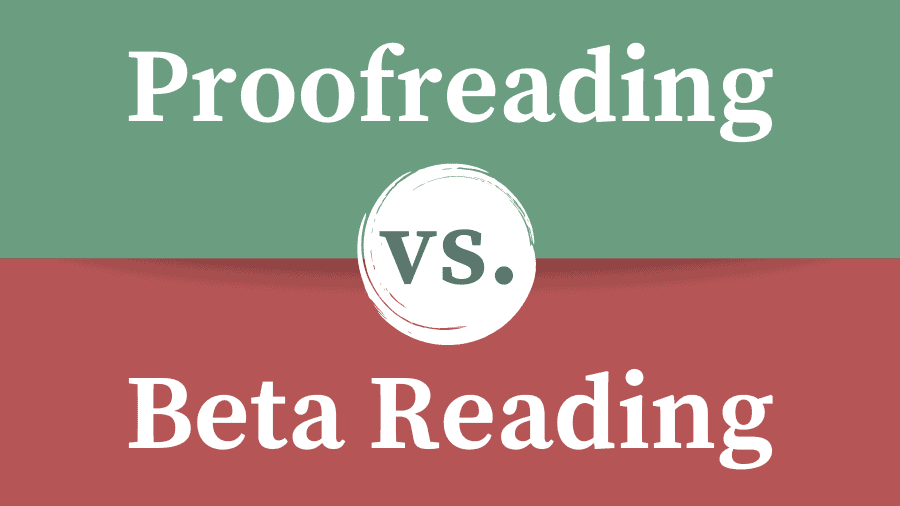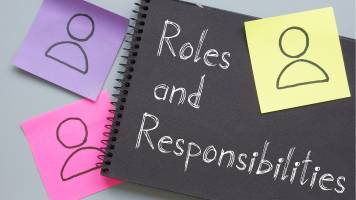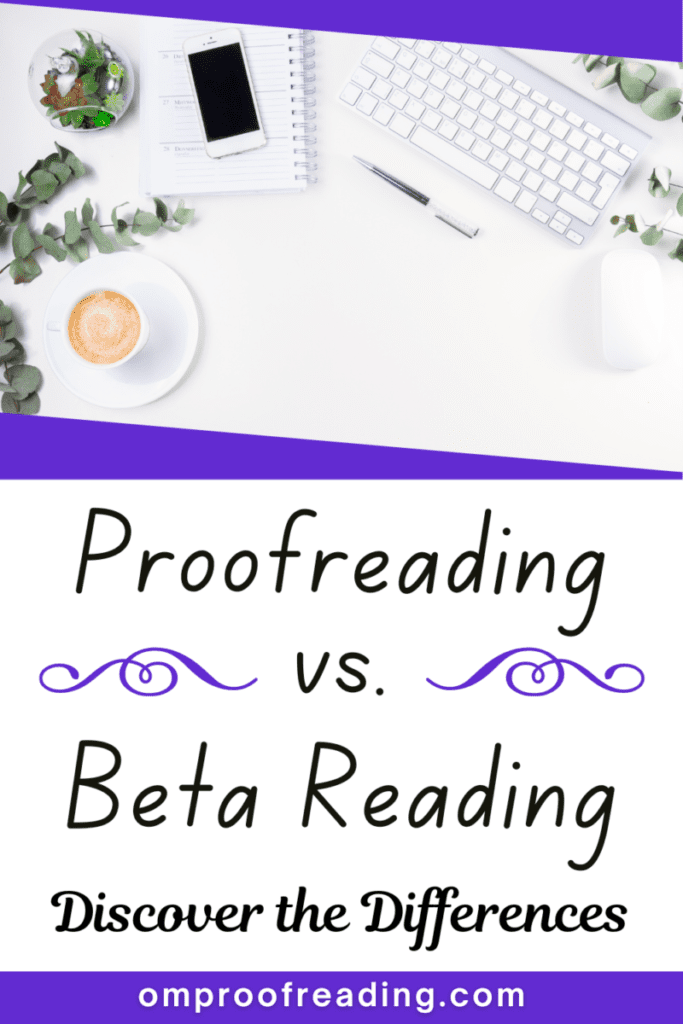This article may contain affiliate links. Please see our affiliate disclaimer in the footer menu for more information. Thank you for your support!

Have you ever wondered how proofreading and beta reading differ? Both proofreaders and beta readers provide value to writers, but the scope of work done by each is vastly different.
Proofreading involves finding and correcting errors and inconsistencies in grammar, capitalization, punctuation, spelling, and formatting in the final draft of a document. Beta reading entails giving authors general feedback about an early draft of a manuscript from an average reader’s perspective.
Let’s learn more about proofreading and beta reading and how they fit into the editorial process.
Proofreading vs. Beta Reading: What Are the Differences?
Let’s examine the differences between proofreaders and beta readers before we delve deeper into the differences.
Proofreaders and Beta Readers in a Nutshell
| Proofreaders | Beta Readers | |
|---|---|---|
| Who are they? | Trained professionals | Family, friends, or someone you hire |
| What do they do? | Find and fix minor errors | Give general feedback |
| When are they needed? | After the manuscript has been professionally edited (and copyedited) | Typically, after the author has self-edited their manuscript |
| Why are they useful? | To fix embarrassing mistakes and polish writing, making it look professional | To give their overall impression and provide helpful feedback, making a manuscript more effective |
Only Proofreaders Receive Formal Training
One of the main differences between proofreaders and beta readers is that proofreaders are trained professionals.
You need to pay proofreaders for their work.
Beta readers, however, haven’t undergone specific training.
They’re people who love to read and are willing to give their honest opinions about a piece of writing (usually a book).
Some writers hire beta readers, and others choose to have their family or friends provide feedback.
Whether you pay a beta reader depends on who you use. You probably won’t pay a dime if you ask a friend or family member to be a beta reader.
However, if you’ve written a book you plan to publish, it’s always a good idea to hire at least one person who does beta reading professionally to ensure you get unbiased feedback.
Proofreaders and Beta Readers Have Distinct Duties
A final difference between these two jobs is, of course, their scope of work.
A Proofreader’s Roll Role

A proofreader arrives after a document has gone through previous editing stages. They look closely at the manuscript to zero in on the details.
They find and fix mistakes and inconsistencies in five main areas: punctuation, grammar, capitalization, spelling, and formatting.
They also look for repeated or omitted words and ensure proper word use.
If you’re interested in learning more about what proofreaders do, I wrote an article about the kinds of errors proofreaders look for.
A Beta Reader’s Role
Beta readers look at the manuscript as a whole and give the author their overall impression. They alert the author to any major problems with basic elements of the story and may point out how to improve them.
Beta readers can let the writer know whether the book was immediately engaging, if it was an interesting read, and if the story progressed naturally and seamlessly.
They may alert the author to holes in the plot, inconsistencies with the characters or setting, parts that are too slow or too fast, and any confusing sections that need clarification.
It’s interesting to note that the role of a beta reader isn’t well defined.
The level of feedback an author needs and what questions they have from the beginning will determine a beta reader’s job.
Naturally, each writer will have weaknesses and need feedback or ideas for improvement in different areas.
Proofreaders and Beta Readers Are Needed at Different Times
Another significant difference between these two roles is when each comes into play.
Most authors use one or more beta readers after self-editing their manuscript.
In other words, when the author thinks the story is as good as it can be, they’ll turn to a beta reader for feedback. However, some authors wait to use beta readers until after their manuscript has undergone professional editing.
Proofreaders, though, are the ones at the end of the line.
They are the last set of eyes on a document before it reaches its audience. Proofreaders try to catch any minor mistakes that managed to stealthily slip through the cracks during previous editing stages.
Who Can Be a Proofreader?
As I mentioned previously, proofreading is a job that requires training. Having a college degree doesn’t qualify someone to be a proofreader.
If you’re interested in being a proofreader, I encourage you to check out my post that outlines the steps to take to become a proofreader.
Why Hire a Proofreader?
Hiring a qualified proofreader will result in a well-polished manuscript—increasing the likelihood it will get published and ensuring an enjoyable experience for the readers. A book with many missed mistakes is off-putting and sure to disappoint buyers.
However, a cleaned-up copy will allow them to enjoy the story and see it in their mind’s eye, uninterrupted. I wrote an article about how to find a qualified proofreader if you’re in the market for one.
Where to Find Proofreaders
If you’re on a budget and need a proofreader, I recommend checking out Fiverr. Fiverr is a freelance marketplace that connects buyers and sellers, and it’s where I got my start as a proofreader.
When I began working on Fiverr, I had just finished a proofreading course that prepared me really well.
I think the clients I had during my first few months got an excellent deal since I was well qualified but had to offer low prices to gain traction on the platform. Many of them were kind enough to leave me a much-appreciated tip.
Who Can Be a Beta Reader?

Anyone who loves to read and is willing to provide honest feedback can be a beta reader. And although beta readers don’t receive professional training, many have qualifications within the editorial field.
For example, writers, editors, and proofreaders may opt to be beta readers.
Furthermore, someone looking for a beta reader for a children’s book may prefer to hire someone with relevant expertise, like a child psychologist or teacher.
In fact, anyone with expertise in any area can be a beta reader for a book within their field.
Authors almost always look for beta readers for fiction books, but they’re occasionally brought in with nonfiction works.
When working with nonfiction, beta readers focus on the document’s overall organization and ensure that all parts are understandable. They also point out any factual errors they notice.
Why Hire a Beta Reader?
Beta readers can significantly improve the quality of a manuscript by offering valuable suggestions.
Since an author is so close to their work, it can be difficult for them to step back and see the bigger picture or problems they may have unknowingly rectified in their mind.
Also, hiring one or more beta readers will make the first stage of editing (developmental editing) easier and faster.
This will likely decrease the editing cost since a more cohesive and less problematic manuscript will be less work for the editor.
Finally, getting the perspective of an average reader can give the author unique insights and let them know if they’re on the road to success with their document.
Where to Find Beta Readers
If you’re interested in doing a beta reading swap with another author, you can find groups that serve this purpose on LinkedIn and Facebook (among other places).
However, if you’d rather pay someone to do the job, Fiverr is also a great place to find affordable beta readers. You can choose someone who has experience in your genre and offers a turnaround time that suits you.
When Do You Use Proofreaders vs. Beta Readers?
Proofreaders and beta readers step up to bat at different times.
Beta readers usually read the draft that only the author has edited. This document is likely to be in rough shape.
But a proofreader comes in at the very end after the other stages of editing have been completed.
They should be dealing with a reasonably clean document at this point, looking to fix any minor mistakes but not doing or suggesting any rewriting.
What are the other editing stages? Let’s see!
The Editorial Process in Detail

Hopefully, the writer has chosen to use one or more beta readers after self-editing their manuscript. The author will make changes based on the feedback they deem helpful and then look into editing. Of course, they’ll make further adjustments after each stage of editing.
The traditional editorial process includes four distinct stages:
1) Developmental Editing
Developmental editors (aka substantive or structural editors) work on the manuscript as a whole and focus on the story’s structure.
They may shift, add, or delete large sections of text. They’ll consider elements like pacing, character development, and plot continuity.
2) Line Editing
Line editors (aka stylistic or content editors) work on issues at the paragraph level and major issues at the sentence level.
They may reorganize sentences within paragraphs. They concentrate on the language to ensure readability, flow, and dialogue that makes sense and stays true to each character.
3) Copyediting
Copy editors work in-depth at the sentence level to address errors with syntax (sentence structure).
They work to make the writing clear, concise, comprehensive, correct, and consistent.
Like proofreaders, they also look for grammar, capitalization, punctuation, spelling, and formatting mistakes.
4) Proofreading
And then the red carpet is slowly and carefully rolled out for the proofreaders who, with sparkling polish in hand, are ready to save the writer from unnecessary embarrassment and make their writing shine like a diamond. (Well, at least that’s what I envision since I’m a proofreader.) 😉
Proofreaders work thoroughly at the word level, and you already know what kinds of minor errors we pay attention to. 😊
What about Alpha Readers, Critique Partners, and Sensitivity Readers?
You may have heard one or more of these terms that are related to beta readers. What do they mean?
Alpha readers are brave souls who read an unrevised manuscript. They sometimes even read an unfinished manuscript. At this point, the story is nowhere near being a shiny diamond—it’s a lackluster rock.
Critique partners are trained writers who give feedback from an author’s perspective.
Sensitivity readers are mentioned on the website of the Editorial Freelancers Association (EFA).
“Sensitivity readers review a manuscript for statements, portrayals, or perspectives that might offend, upset, or misrepresent people from a given group. Sensitivity reads are generally performed by members of the community referenced within the work. The purpose is to avoid misrepresentation of groups and the perpetuation of harmful stereotypes.”
– EFA
I hope this article has clarified the differences between proofreading and beta reading. Both are essential processes for molding a manuscript into a masterpiece.
If you’d like to read a similar article, I wrote a piece about the differences between proofreading and copywriting.
Best wishes to you!
“Though my soul may set in darkness, it will rise in perfect light; I have loved the stars too fondly to be fearful of the night.”
– Sarah Williams

Recent Posts
Punctuation is important because it enables us to communicate our message clearly and effectively. Without punctuation, we wouldn’t understand how units of a sentence relate to one another or how...
Although you're probably somewhat familiar with adverbs, you may be unaware of sentence adverbs. As a trained proofreader who has studied the parts of speech, I can help you understand this unique...
